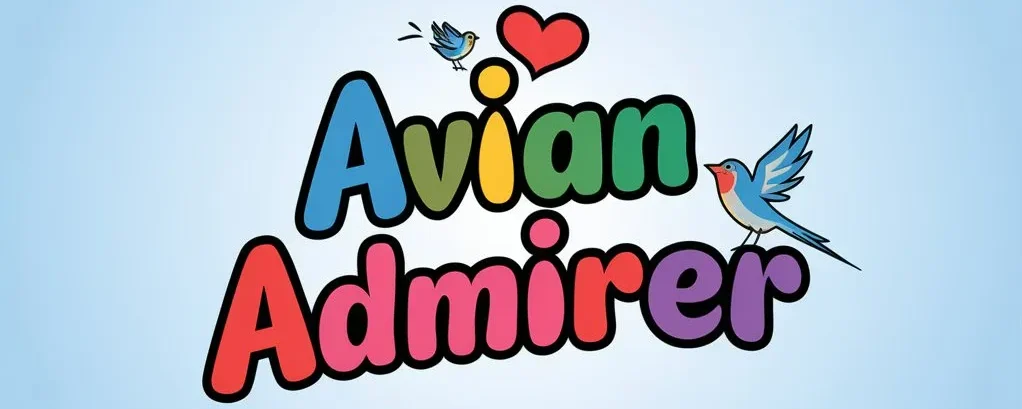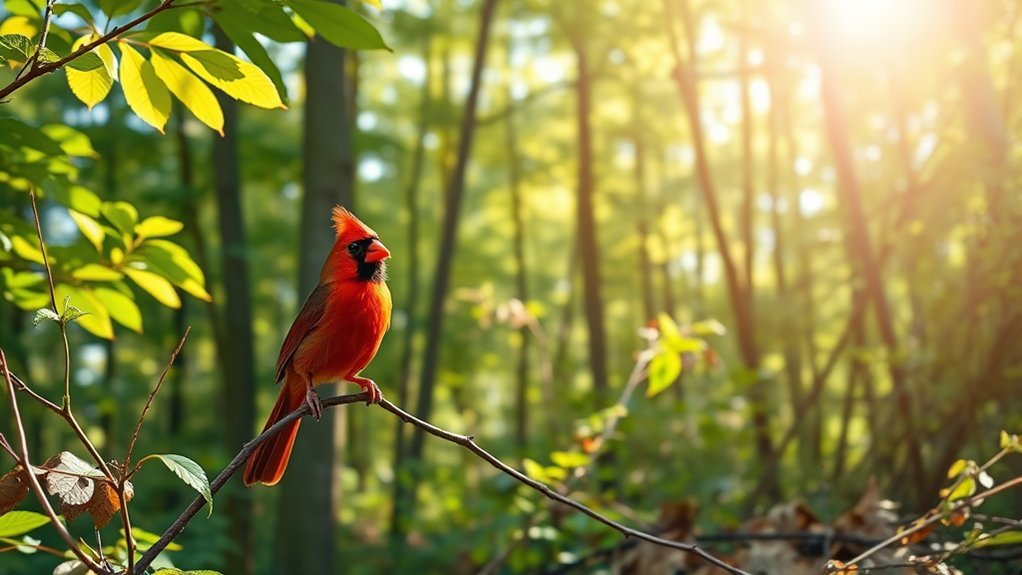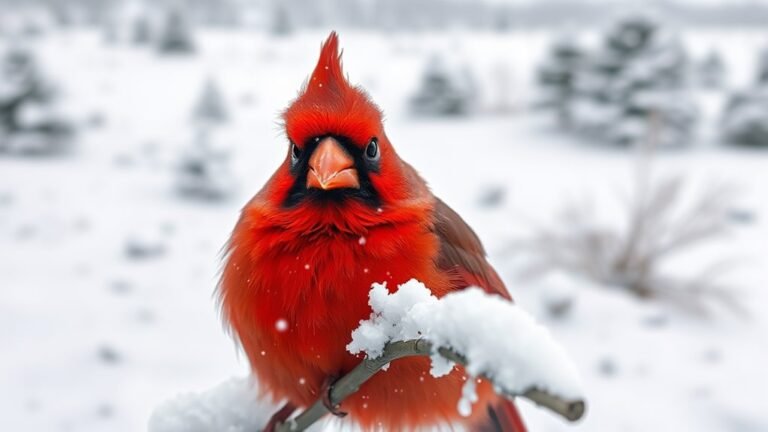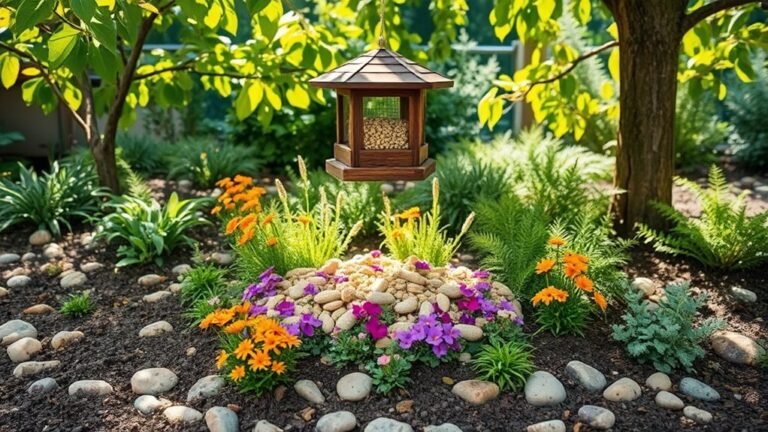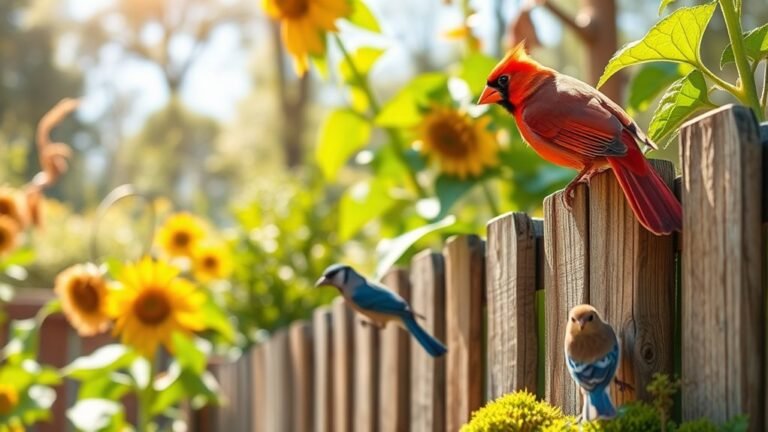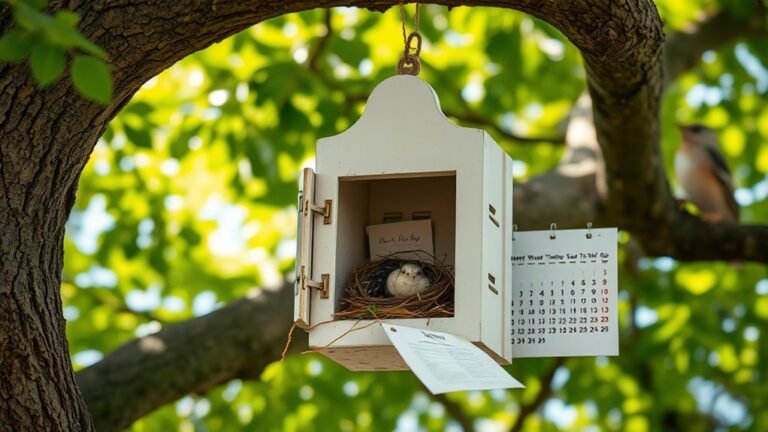How to Identify Birds in North Carolina: Tips for Beginners
To identify birds in North Carolina, first, learn about the local habitats. Birds live in different places, such as coastal marshes and dense forests. Use good binoculars and a field guide for your observations. Notice the color patterns, beak shapes, and behaviors, as these help with identification. During your exploration, observe how bird populations and behaviors change with the seasons. Connect with local experts to expand your knowledge and improve your skills. Happy birdwatching!
Key Takeaways
- Use a quality field guide, like "The Sibley Guide to Birds," to learn about bird species in your area.
- Watch how birds behave, including what they eat and where they nest. This can help you identify them and understand their habitats.
- Get a good pair of binoculars. This will allow you to see distant birds closely without bothering them.
- Visit various habitats in North Carolina, such as coastal marshes and forests, to see different bird species.
- Try mobile apps like Merlin Bird ID for quick help with bird identification and to improve your birdwatching experience.
Understanding Bird Habitats in North Carolina
North Carolina has many different bird habitats due to its geography and climate.
The coastal marshes are wetlands filled with diverse plants and animals. These areas attract birds like herons and kingfishers. You can watch these birds searching for food in the grasses, which is vital for their survival.
Moving further inland, the forests offer various environments, including deciduous and pine trees.
In these green spaces, birds such as woodpeckers and warblers find ideal spots for nesting and feeding. Understanding these different habitats helps you identify various bird species and appreciate North Carolina's natural beauty.
Essential Tools for Birdwatching
Birdwatching in North Carolina can be a rewarding experience. To make the most of it, start with quality binoculars. Choose a pair with high magnification and a wide field of view. This will help you see distant birds more clearly.
Next, get a good field guide that focuses on North Carolina bird species. A notebook is useful for noting your sightings.
Wear lightweight, weather-resistant clothing and sturdy shoes for comfort during your trips. A camera with a zoom lens can capture special moments.
Equipping yourself with the right tools deepens your connection to the birds around you. Enjoy your birdwatching adventure!
Observing Bird Behavior
How can you understand the behavior of birds? Watching them closely provides clear insights into their species.
Notice their feeding habits first. Do they search for food alone or with others? What do they eat? Are they digging in the dirt, using feeders, or moving between branches? Each of these actions gives you important information.
Next, pay attention to their nesting behaviors. Look for signs of courtship, like singing or flying displays. When birds start to nest, observe the materials they collect and where they build their nests.
Many birds return to the same locations year after year. By keeping track of these behaviors, you enhance your knowledge of local birds. This connection can also help you bond with other bird lovers in your community. Enjoy the process of discovery!
Notable Bird Species to Look For
Birdwatching in North Carolina is a rewarding experience.
Visit places like the Outer Banks and the Blue Ridge Mountains to see a variety of bird species. Look for the colorful Painted Bunting, easily recognized by its bright plumage. You might catch a glimpse of the Red-shouldered Hawk, known for its unique call and hunting skills.
Use binoculars to get a closer look at these birds without startling them. Spring and fall are great times to witness migrating birds.
Joining local birdwatching groups can enhance your experience, offering tips and shared excitement as you observe these amazing species.
Enjoy the simplicity and beauty of birdwatching in North Carolina.
Using Field Guides and Apps
What tools can enhance your birdwatching experience in North Carolina?
Field guides are essential. They provide clear illustrations and descriptions specific to the region. Reliable options include "The Sibley Guide to Birds" and "Peterson Field Guide to Birds of North America."
These guides serve as quick references in the field.
Mobile apps can also help you identify birds. Look for apps that offer image recognition, location tracking, and audio playback of bird calls.
Apps like Merlin Bird ID and iNaturalist have simple interfaces that make exploration easier.
By using these resources, you improve your bird identification skills and connect with the diverse bird community in North Carolina.
Enjoy your birdwatching adventure!
Identifying Birds by Sight and Sound
Birdwatching in North Carolina is enjoyable when you learn to identify birds by sight and sound.
For visual identification, look for size, color, and beak shape. Notice unique markings to tell similar species apart.
For sound recognition, listen to different calls and songs; each bird has its own sound. Use apps or recordings to help you learn and remember.
By using both methods, you'll improve your bird identification skills. Sharing your discoveries with other birdwatchers creates community and connection.
Explore this approach to gain a greater appreciation for North Carolina's variety of birds.
Seasonal Migration Patterns
Seasonal migration patterns are crucial for birds in North Carolina. Weather significantly affects these migrations, influencing when and how birds travel. Knowing these patterns can improve your birdwatching experience.
Consider these important points about migration:
- Breeding Seasons: Birds arrive in North Carolina in spring. They mate, build nests, and lay eggs.
- Weather Influences: Changes in temperature and food availability lead birds to find suitable habitats. These factors shape their migration strategies.
- Migration Routes: Learning about common routes, like the Atlantic Flyway, can help you predict which bird species will appear at different times of the year.
Understanding and observing these trends can make your time in nature more enjoyable and enriching.
Joining Local Birdwatching Groups
Joining local birdwatching groups can improve your experience and knowledge of bird species in North Carolina.
These groups plan outings, giving you chances to see birds in different areas while learning from experienced birders. You'll understand birding etiquette, which helps maintain respect among fellow birdwatchers and protects nature.
Participating in conversations can enhance your skills in identifying species and understanding their migration patterns. Engaging with these communities helps you grow your abilities and build friendships with others who love birdwatching.
Keeping a Birdwatching Journal
Keeping a birdwatching journal is a valuable practice for birdwatchers of all levels.
Documenting your experiences can help you understand birding techniques better and provides several benefits:
- Observation Tracking: Record bird species, locations, and behaviors. This helps you notice patterns and improve your identification skills.
- Personal Growth: Reflect on your progress over time. Note how your identification abilities improve and how your knowledge of local ecosystems expands.
- Community Engagement: Share your journal entries with other birders. This encourages discussion about sightings and tips, strengthening your connection to the birdwatching community.
Your journal serves as a tool for connection and continuous learning, making your birdwatching experience in North Carolina more enjoyable and enriching.
Frequently Asked Questions
What Is the Best Time of Day for Birdwatching in North Carolina?
The best times for birdwatching in North Carolina are early morning and late afternoon.
In the early morning, birds are active as they search for food after nightfall. This time provides great chances to see various species. Later in the afternoon, birds gather to feed again before night sets in. Observers can enjoy watching flocks foraging and interacting.
These times enhance the experience of connecting with nature and observing birds in their natural habitats.
How Can Weather Affect Birdwatching Opportunities?
Weather has a significant effect on birdwatching opportunities. Temperature changes and storms can influence bird behavior and migration routes. These factors can lead to different birds appearing in various locations. Understanding how weather affects birds can improve your birdwatching experience and deepen your connection to local wildlife.
What Clothing Is Recommended for Birdwatching in Different Seasons?
For effective birdwatching, choose clothing based on the season. In warm months, wear lightweight and breathable fabrics. In colder months, opt for insulated layers to stay warm. Always include waterproof options, as weather can change quickly. Dressing appropriately will enhance your comfort and experience while birdwatching.
Are There Any Legal Restrictions on Birdwatching in North Carolina?
When birdwatching in North Carolina, follow local wildlife regulations and birdwatching ethics. Respect nesting areas and protected species. Know the laws in your area to enjoy birdwatching in a responsible and sustainable way. This approach helps protect wildlife and enhances your experience. Happy birdwatching!
What Should I Do if I Find an Injured Bird?
If you find an injured bird, gently place it in a box. Make sure to keep the box secure and comfortable. Then, contact a local wildlife rehabilitation center. They can help the bird receive the care it needs to heal. Your quick actions can make a big difference in the bird's recovery.

Ava is a bird enthusiast and nature lover who has spent countless hours observing and learning about the fascinating world of birds. With a passion for sharing her knowledge and inspiring others to appreciate the beauty of birds, Ava writes about her experiences and insights on avianadmirer.com.
